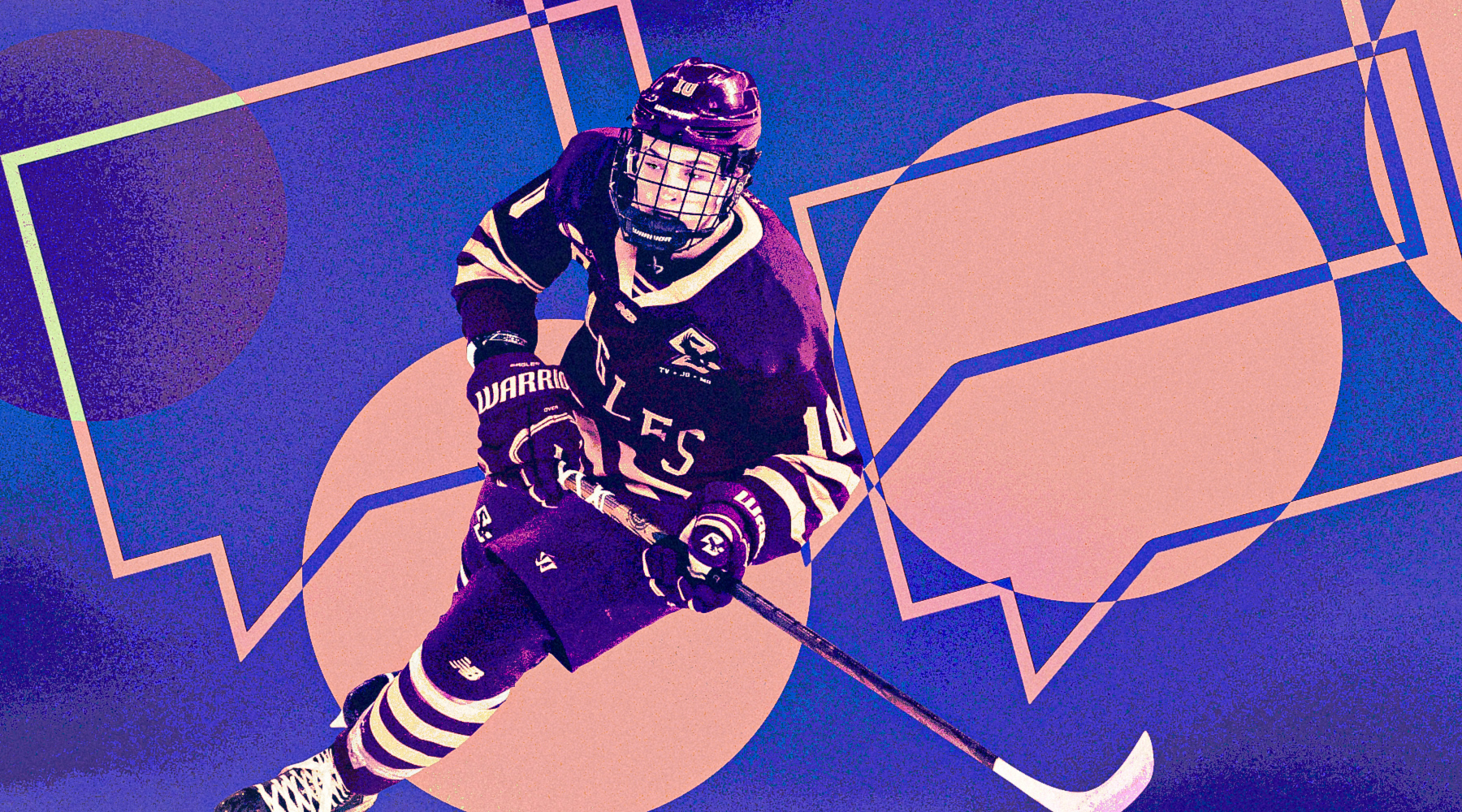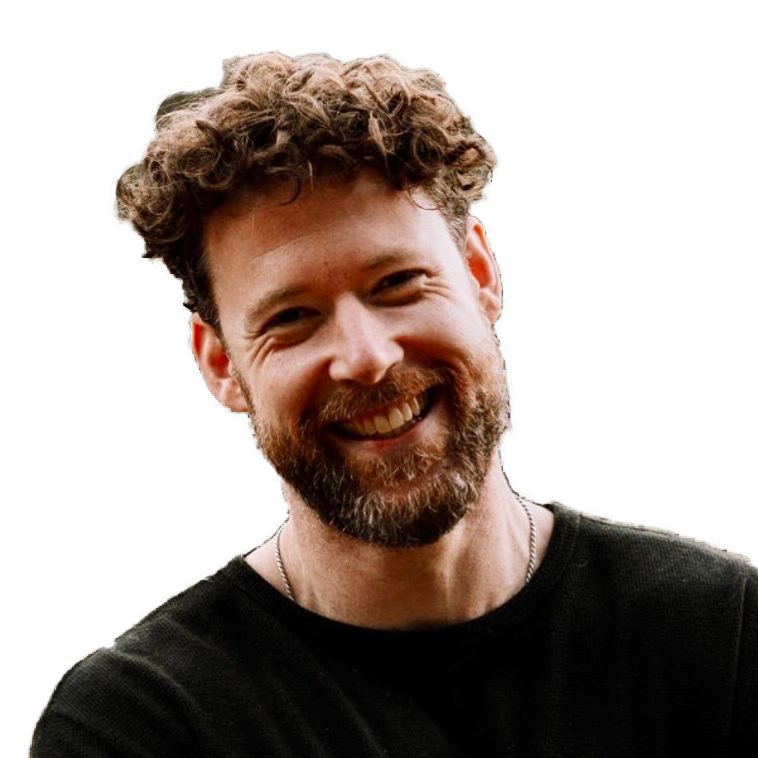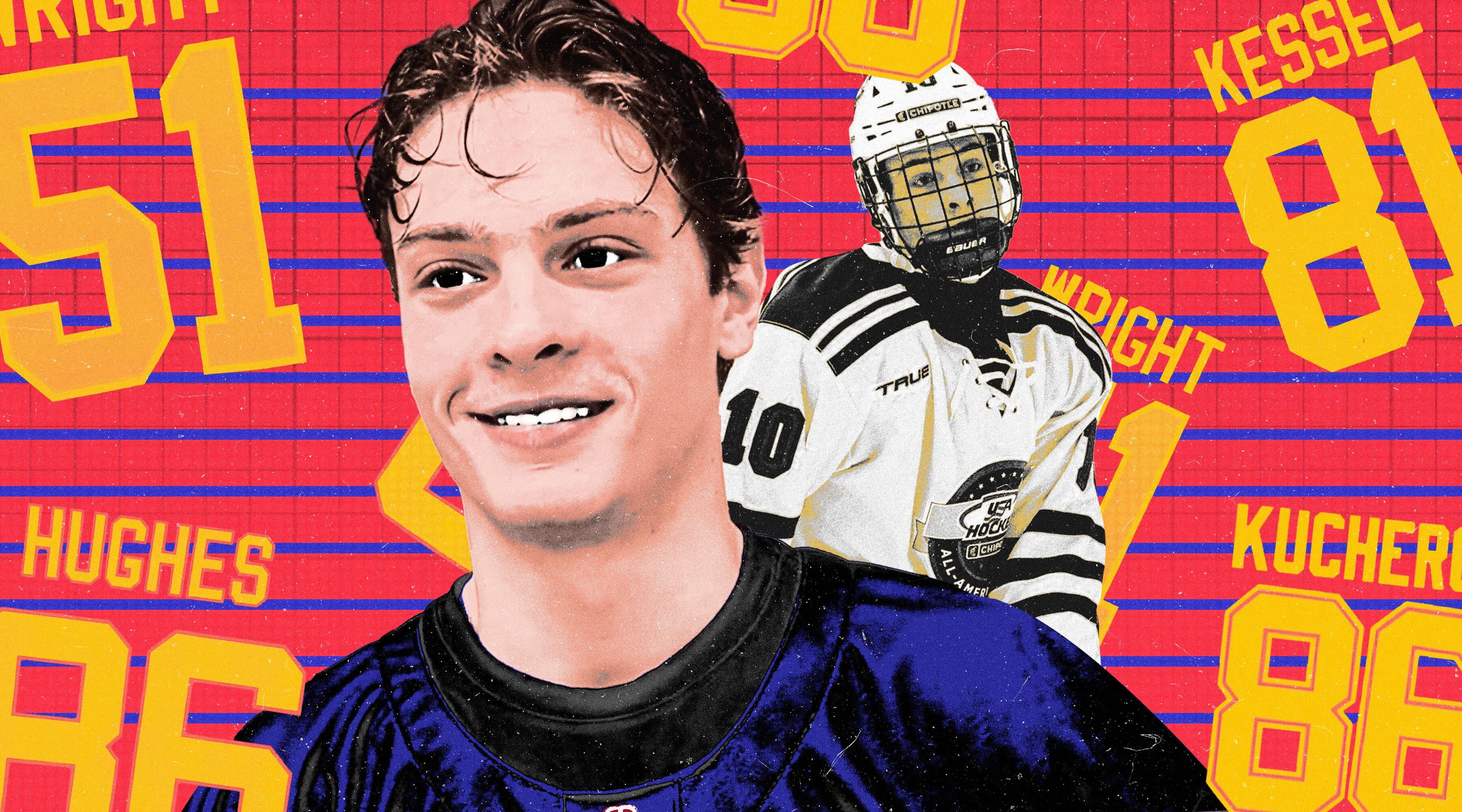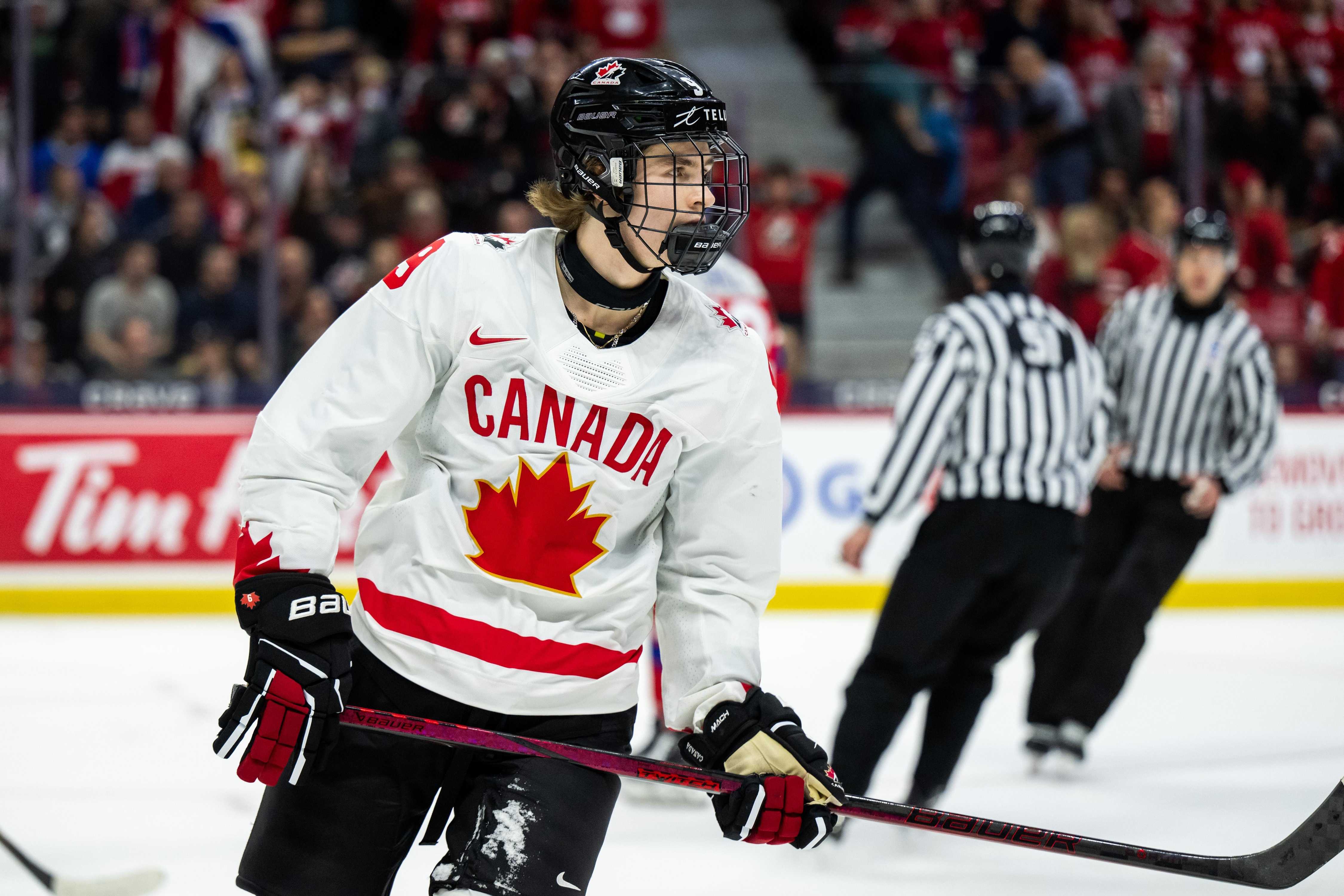James Hagens: Inside the Mind of a Future Star

BUFFALO, New York – James Hagens doesn’t just play fast.
He thinks fast, handles fast, and creates even faster than most players in his draft class. Blink and he’s already sliced through a seam, pulled off a no-look pass, or handled his way out of a phone booth. At just 18 years old, his resume already includes centring the top line for both Team USA at the World Juniors and Boston College with a mix of elite skating, dynamic vision, and the kind of poise you don’t usually see at that age.
He's an electric talent.
Hagens processes the game faster than almost anyone his age. His skating is smooth and powerful. His shot, sneakily dangerous. And his presence — on and off the ice — suggests a player far beyond his years.
To find out what sets him apart, I spoke with Hagens himself, Boston College assistant coach Mike Ayers, and Team USA World Junior bench boss David Carle. What they shared paints the picture of a player poised to make a major impact in the NHL.
What Makes Him Different?
Hagens sees the ice in layers. While others react to the play, he’s already anticipated the next two moves. “The sense is so high-end,” said Team USA head coach David Carle. “His vision, his skating, and puck handling… You imagine him at 190 pounds, and he'll be scary good.”
Hagens’ processing speed allows him to make high-difficulty plays look routine. He senses pressure before it arrives, slips into soft ice, and finds teammates through traffic with ease. Boston College assistant coach Mike Ayers described him as “a sponge” — constantly absorbing video, coaching points, and adjustments at game speed. "I think sometimes his skillset is so elite that people overlook how smart he is,” Ayers continued. “He sees the ice very well and anticipates the play. That IQ just magnifies everything else he does."
“I saw a lot of growth in his game through the video, through teaching, coaching, and then his own internal drive,” added Carle. At top NCAA and international levels, that mental edge has allowed Hagens to not just survive, but drive play.
Despite being younger than the vast majority of his teammates and competitors, Hagens stepped into top-line center roles for both Boston College and Team USA without hesitation. His quiet confidence and poise off the ice mirror his composure on it. Coaches point to his ability to adjust quickly and his even-keeled demeanour in high-pressure moments. He doesn’t just play with maturity, he leads with it.
From day one, he earned the respect of his older teammates by being consistent, prepared, and unselfish. Whether reviewing clips or taking extra reps, Hagens treats his development with a sense of professionalism that is impressive for a player his age.
That exceptional coachability is a standout trait that NHL organizations will value greatly. “He's sincerely coachable,” said Ayers. "He asks real questions because he wants to understand, not just because he's supposed to. And that's rare at this level."
That hunger to improve, coupled with elite natural talent, makes him a rare projectable star.
Carle praised both his competitiveness and personality, saying he was “very enjoyable to be around” and quick to build camaraderie. “He’s very likable amongst his teammates… not afraid to get in the mix.” For coaches, it’s a dream combination: a player who elevates shifts with creativity, but never thinks he’s above learning. Hagens’ humility, drive, and high-level understanding make him a coach’s preferred foundational piece.
“It's something I learned growing up,” Hagens said. “Always ask questions. Be coachable. Be someone who can take feedback and implement it into your game. It’s something I’ve always made sure to stick with me.”
What sets Hagens apart isn't just his pedigree or point totals, but the way those tools translate into tangible, game-breaking potential every time he hits the ice.
How Does He Impact the Game?
Skating is the lifeblood of the game. If you can’t keep up, you can’t impact it to a supreme level. Fortunately, Hagens has that covered in spades. The dynamic speed is immediately noticeable, but what truly sets him apart is the way he layers it: sharp edge control, quick-twitch acceleration, and an intuitive feel for pace variation that lets him dictate tempo.
"He started holding on to pucks more," said Ayers. "Using his skating ability, his ability to possess the puck but keep his eyes up ice, knowing his options before he got it."
That vision feeds naturally into his elite playmaking, which was especially evident when playing alongside now NHLers, Ryan Leonard and Gabe Perreault. Those two players had played together almost exclusively for three seasons, most often with San Jose Sharks young star, Will Smith. Stepping in and filling that role was no easy ask, but Hagens adapted quickly.
“James and Will's games are different,” Carle said. "So the chemistry needed to be worked on by all three of them…"
It could be said that Hagens showed some level of deference to the older mates early on at Boston College, but as the season wore on, he started to become an equal driver of the line. His ability to manipulate defenders with subtle shifts and deception opened up lanes for teammates to finish. He primarily played the set-up man role. Yet one of his most overlooked tools is his shot.
As Hagens himself has noted, people often underrate his scoring ability. He’s quietly effective from the slot and off the rush, evolving his release to catch goalies off-balance. The issue was, he ran into a cold spell in adapting to the NCAA level and only found the back of the net 11 times in 37 games with Boston College.
“It’s hard to score goals,” Hagens shared. “Going through a drought, you have to put your nose down and go to the net. Do the things that not everyone is willing to do. Shooting pucks. Extra workouts. If you want to succeed, you have to do the stuff when no one is watching.”
Historically, this has been a player who has made a habit of finding the back of the net. Last season, he had 39 goals in 53 games for the US National Team Development Program. He converted on 18.5 percent of his shots. He followed that up with nine goals in seven under-18 World Championship games.
As a freshman at Boston College, he averaged 2.7 shots on goal per game. But he was only able to convert on 11.1 percent of them. With increased shot frequency, it’s easy to forecast him scoring at more regular intervals moving forward.
Then there is his drive to succeed. Like all great athletes, Hagens is singularly-focused on winning. His trophy case is already beginning to fill up even at a young age. He has a U17 World Championship gold, a U18 World Championship gold, and World Junior gold medal. He owns the all-time tournament scoring marks for those first two events to boot.
“James is deceptively very competitive," Carle shared. “He wants to win….When the games are big, you see the juice come out more. There's this perception that he likes to be on the perimeter, but I don't think he's afraid at all to get to the inside and impact the game in the hard areas of the ice.”
With so many NHL-ready traits already on display, the conversation quickly shifts from how Hagens dominates to when he’ll do it at the highest level.
Is He Ready for the NHL?
Few draft-eligible players center a top line at the World Juniors. Fewer still do it in the NCAA. Hagens has done both. He’s excelled in roles typically reserved for elder statesmen, handling the size, speed, and structure of older opponents with a level of poise that belies his age.
“He was trying to learn and adapt,” said his Ayers of Hagens early foray into College hockey. “But he catered a lot to our older guys and had a lot of respect for them… Now it’s his opportunity to have everything facilitated through him.” That growth curve, from deferring to commanding, makes his NHL readiness a legitimate conversation.
But not for Carle. His position on the matter is confirmed: “He should 100% return to school.”
That comment doesn’t contradict what many on the NHL team side of things have shared. “He needs another season,” an NHL scout shared. “It’ll be his team next year, and I think we'll see a dominant player.”
However, for the team that selects him, the dilemma is real. Do you bring in a player who’s almost ready to contribute now, and offer your fanbase a shiny new toy to be excited for? Or do you provide him another year to evolve into something even more polished, more dominant, more complete?
But whether it’s this year or next – and we expect next – the real intrigue lies in what kind of player Hagens becomes once he’s fully unleashed.
What’s His Ceiling?
“He’ll be a special player… I don’t see him not reaching that potential,” Carle said. A rare statement of conviction from a coach who works with NHL-bound talent every year. Carle wasn’t alone in that regard.
“I think he has the ability to be that top-line, play-driving, two-way center,” Ayers stated. “He's got the skill, and he works hard enough to get it done."
His coaches aren’t the only ones who believe in his upside. Hagens himself was quick to contextualize the type of impact a drafting team may be landing if they call his name. “My expectation is to become a first-line centre in the NHL and help a team win a Stanley Cup one day.”
.png)
The issue is trying to accurately project Hagens’ future based on past examples. Historically, we haven’t seen that many draft-eligible players skate in the NCAA. But when you sort them by centres that are 6-foot or shorter, the list becomes a veritable minefield. You have to go back to 1997 and Mike York before you can find a player that fits that profile who went on to have a reasonably successful and productive NHL career.
This doesn’t mean Hagens is destined to follow in the footsteps of Jordan Schroeder. But the simple fact is that there are very few first-line NHL centres who are under 5-foot-11. The exceptions are often truly special.
But at least one NHL executive doesn’t believe his size will be an issue. “No concerns there. He doesn’t run from the battle. He has a nice low centre of gravity, and it doesn’t look like he’ll have issues getting strong.”
The same executive went on to talk about Hagens leveraging his skating and creativity to mitigate any size concerns. “Even in the National, he’ll have a step on a lot of players. Very dynamic with the puck. I think a lot of people aren’t giving his game the respect it deserves.”
The team at Elite Prospects is certainly giving his game respect.
In our annual Elite Prospects’ Scout Poll, Hagens was voted as the second-best transition forward. He finished third among all puck handlers, offensive forwards, and playmaking vision in the class.
It’s the type of package that rarely slips on draft day. A long resume of success, a myriad of elite tools, a drive to succeed, and an open mind for learning. With elite hockey sense and rare maturity, he’s earned the trust of coaches, the respect of teammates, and the attention of NHL front offices. Hagens has proven he plays with a purpose and poise well beyond his years.
Wherever he’s taken this June, there’s little doubt he’ll make an impact. He’s not just built for the next level. He’s already inching toward it.



